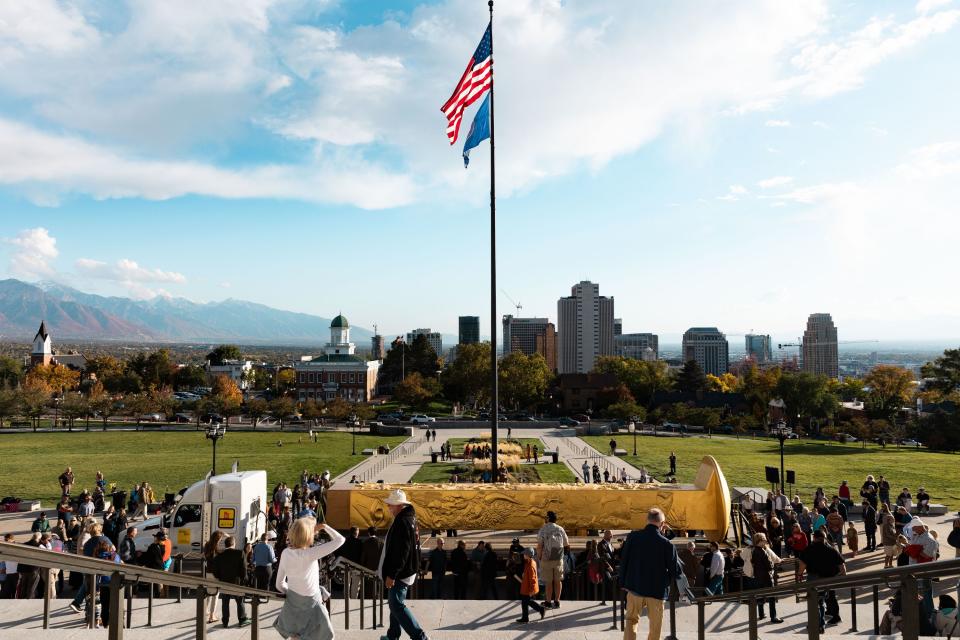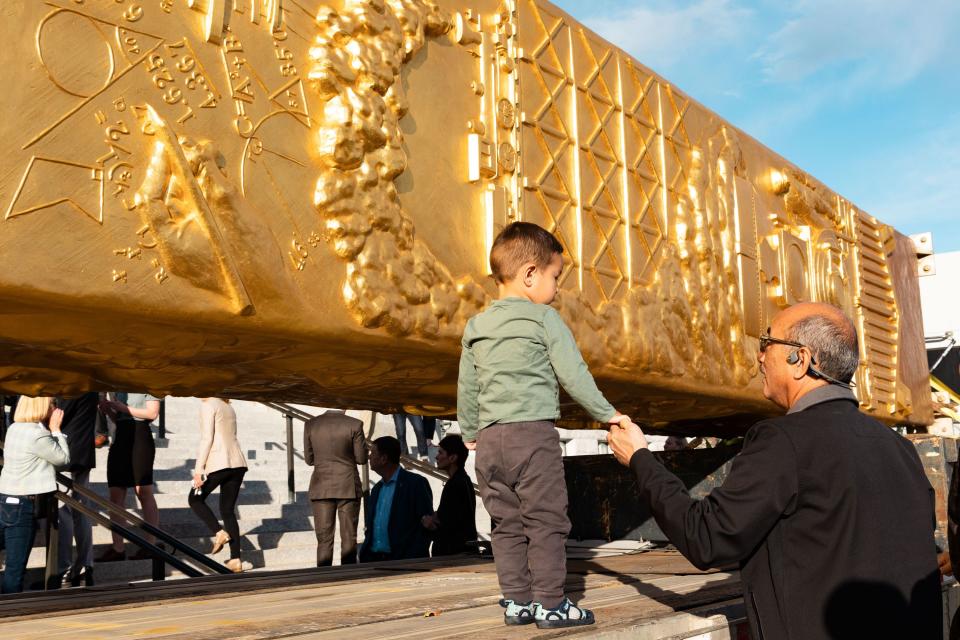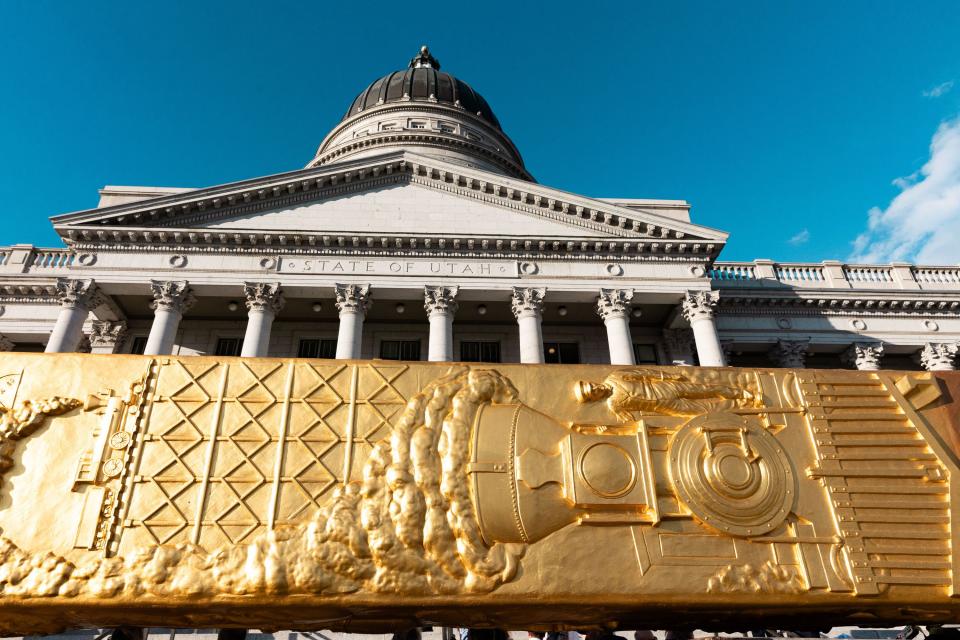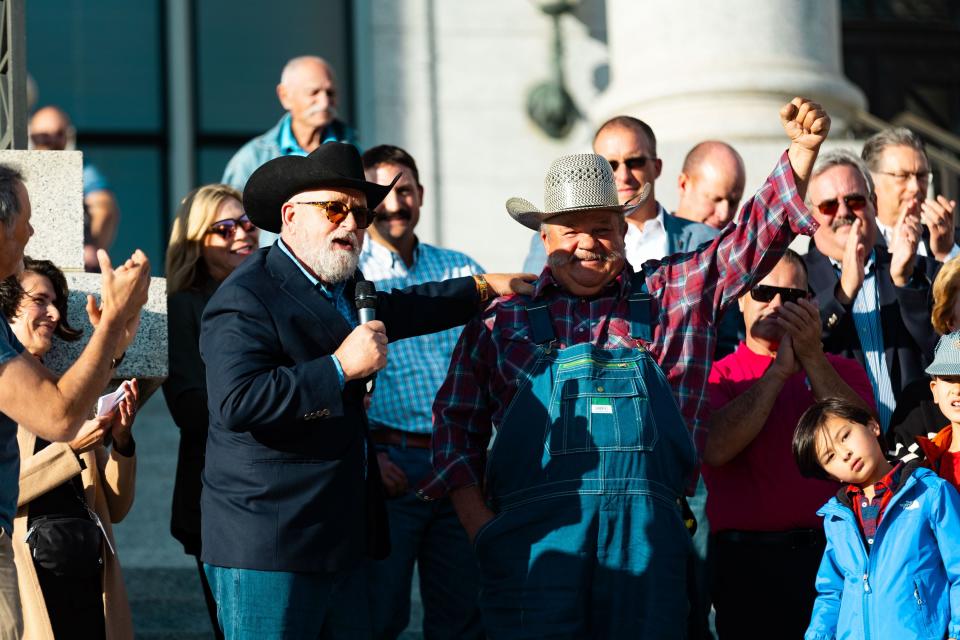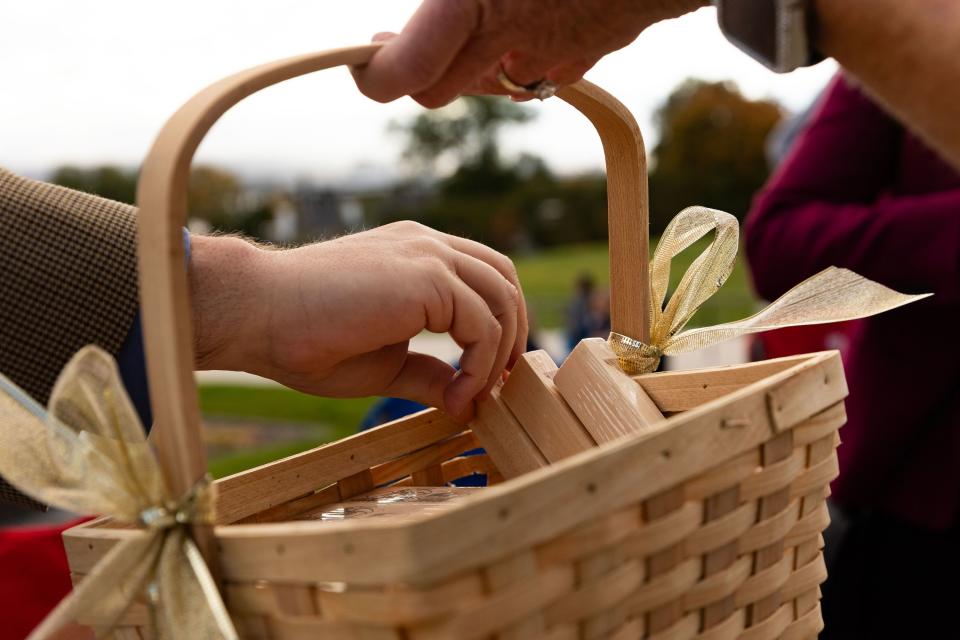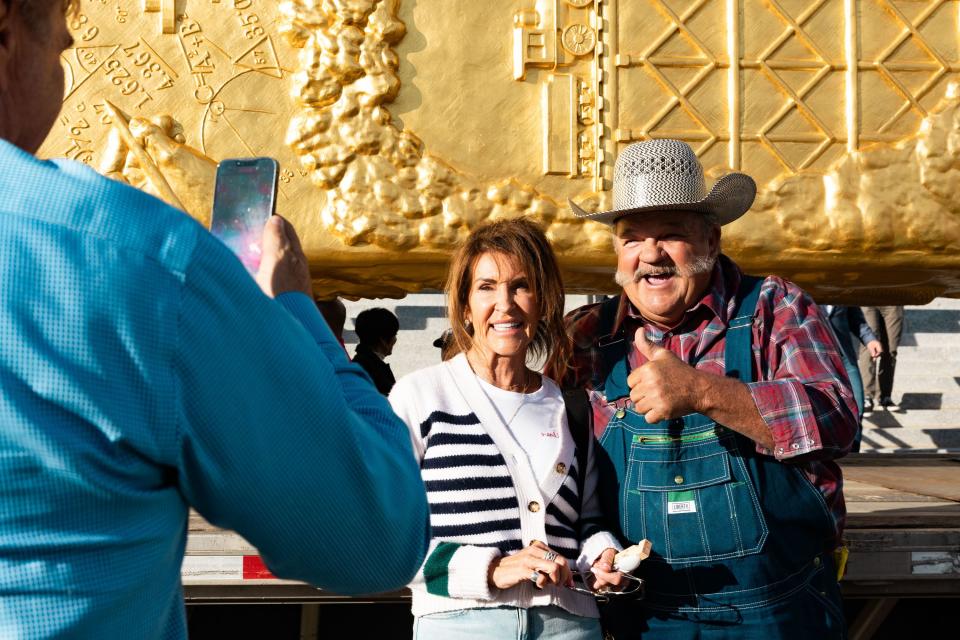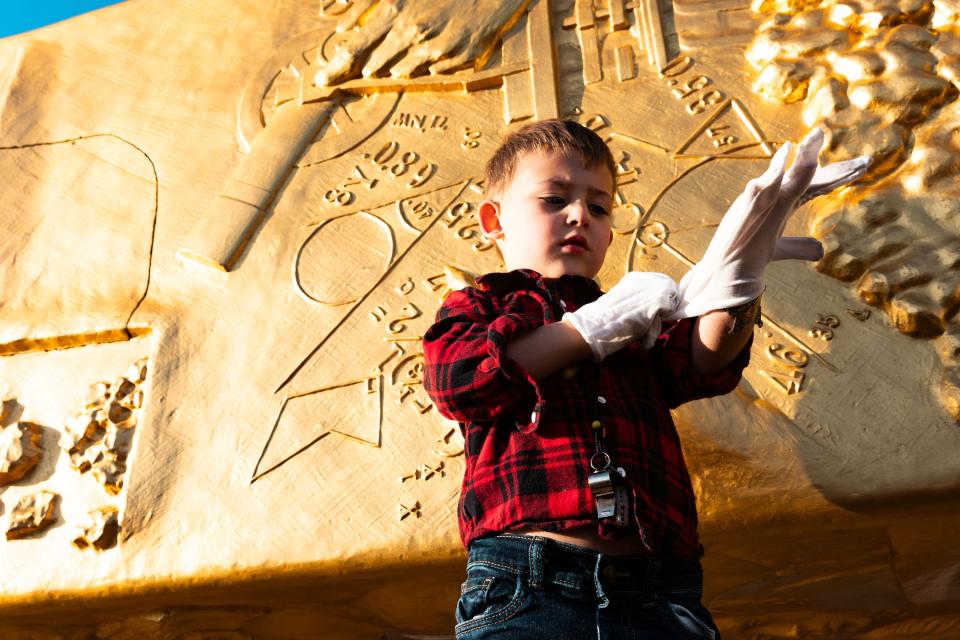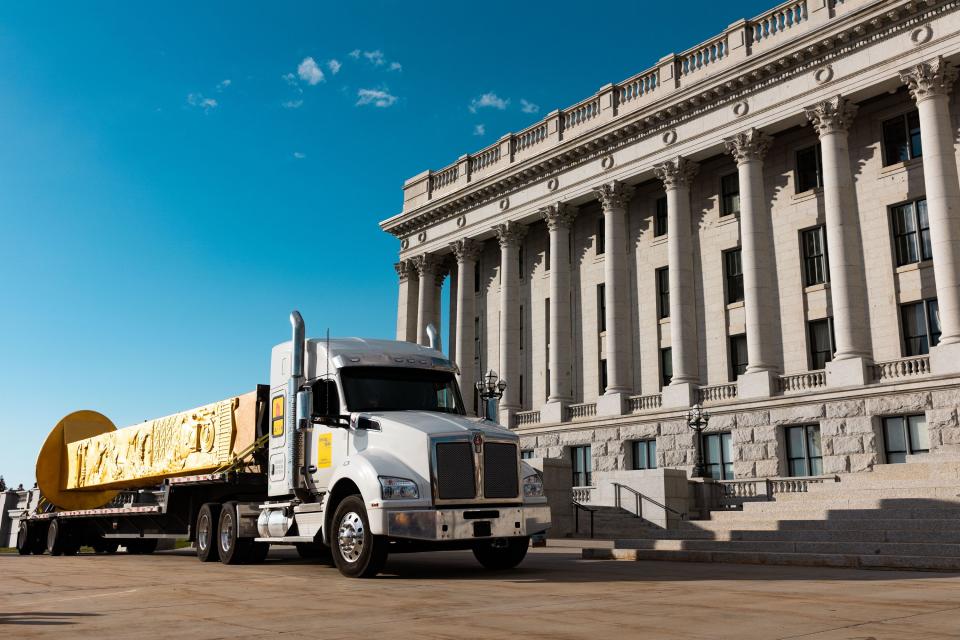The golden spike is here! And is 43 feet tall
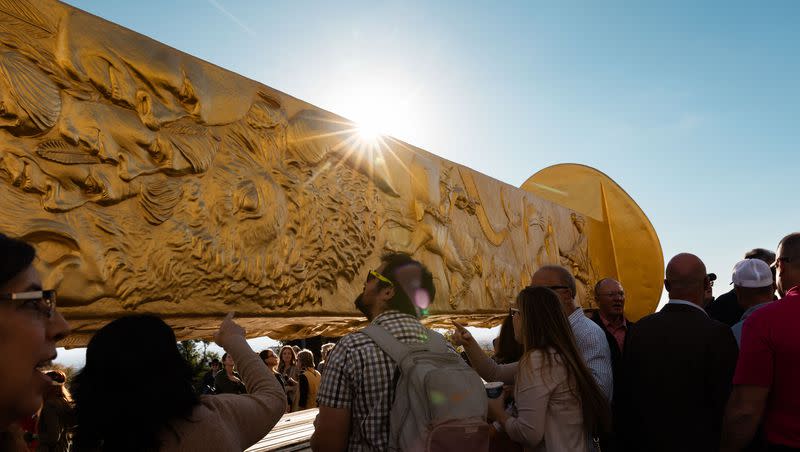
The diverse coalition of workers who came together to build the transcontinental railroad mesmerized bronze sculptor Douwe Blumberg.
As one dispatch for the Daily Alta California memorialized the railroad’s completion in 1869, “All personal and sectional animosities, all distinctions of class, all prejudices of race and nationality were forgotten for the moment in the all absorbing interest of the grand event of history and civilization about to take place.”
When Blumberg heard the Utah-based nonprofit organization Spike 150 formed a committee to commission an artist to construct a golden spike monument, he knew this project was “just in my wheelhouse.” And he couldn’t stop thinking about the workers behind the railroad.
After going through the testing process, the committee awarded him the commission and on Monday, Blumberg’s 43.3-foot monument arrived in Utah, culminating its multistate tour from Kentucky to the steps of the Beehive State’s capitol building.
Related
The gold-leafed, spike-shaped monument has 74 different people portrayed. “Our focus is more on the unnamed people and the diversity of the people who helped” build the railroad, Blumberg said. He paired dozens of not well-known railroad workers with a few recognizable people such as Abraham Lincoln, Grenville M. Dodge, Brigham Young and Theodore Judah.
“This is memorializing and helping us remember the folks who brought the country together,” DJ Bott, mayor of Brigham City, told the crowd gathered Monday on the steps of the state capitol building, looking at the monument.
“I like to describe this piece as the ultimate storyteller,” Spike 150 president Robyn Kremer said in a phone interview. When the committee was assessing the artwork submitted, she said they noticed “the sculpted depictions of railroad worker groups.” It was unique.
“The enthusiasm across the country has been phenomenal,” Kremer said. At the zero mile marker for the railroad in Council Bluffs, Iowa, a chilly rain drizzled when the truck carrying the spike stopped there. But that didn’t deter members of the community from visiting the monument and telling stories of their families’ multigenerational involvement with Union Pacific.
Some even shared stories of how their ancestors were there at the original installation of the golden spike, Kremer said.
This monument will reach its final destination in 2024 when it is installed in Brigham City. It not only culminates three years of Blumberg’s artistry, it symbolizes what was made possible when the East and West could meet.
Related
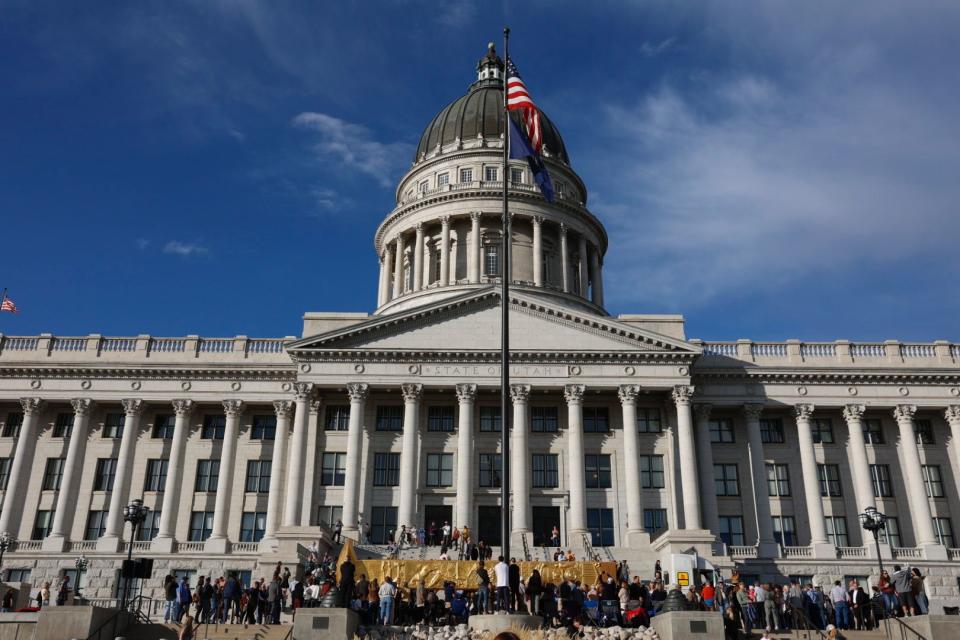
Before the railroad
There is “nothing more important before the nation than the building of the railroad to the Pacific,” President Lincoln said in 1862, according to Gen. Dodge’s recollection.
Prior to the invention of cars, taxis and commercial jets, people trekked by wagon or on foot to move from East to West, a pioneer history well-known in Utah and the Intermountain West. Alexander Graham Bell had not yet invented the telephone, so mail sometimes carried on horseback, newspapers and, eventually, telegraphs composed the slow communication across state lines.
The rugged, mountainous terrain of the West made communication particularly cumbersome. The Butterfield Overland Mail Service and the Pony Express made it possible for transcontinental communication, but it was slow and costly.
Transporting goods or trekking west presented other challenges. Typhus, scurvy, malaria and other ailments accompanied sea travel along with cramped conditions, lack of fresh food and limited technology to predict weather and ocean conditions. Instead of traveling by sea, would-be travelers could pack up buggies and brave the craggy landscape, knowing they might encounter deadly weather or animals en route.
As smaller-scale railroads were built in the 1830s across the Eastern United States, talk began about connecting the East and the West by railroad. “For nearly three decades the nation had been dreaming of the scheme, it had done little more than dream,” James K. Medberry wrote for The Atlantic, reflecting on the transcontinental railroad.
And in 1849, a man named Asa Whitney proposed an idea: a railroad from Chicago to California. He enjoyed popular support, according to the Library of Congress. Soon after in 1852, railroad engineer Theodore Judah mapped a route through the mountains and showed Congress his findings four years later.
Several investors including Mark Hopkins, James Bailey and Collis Huntington started to support the project in 1860, per PBS. Then, on July 1, 1862, Lincoln signed the Pacific Railway Act, authorizing government support for the creation of the Pacific Railroad.
The signing of this act came when the Civil War raged on. Lincoln saw the construction of the transcontinental railroad as advantageous to the North’s efforts to win the war because it could be used to establish military stations, according to Union Pacific.
The railroad wasn’t completed until after the end of the war and after Lincoln’s assassination.
Related
How these 2 Utah museums are honoring the Golden Spike’s 150th anniversary
See what Utah looked like when the railroads met in UMFA’s ‘Race to Promontory’ exhibition
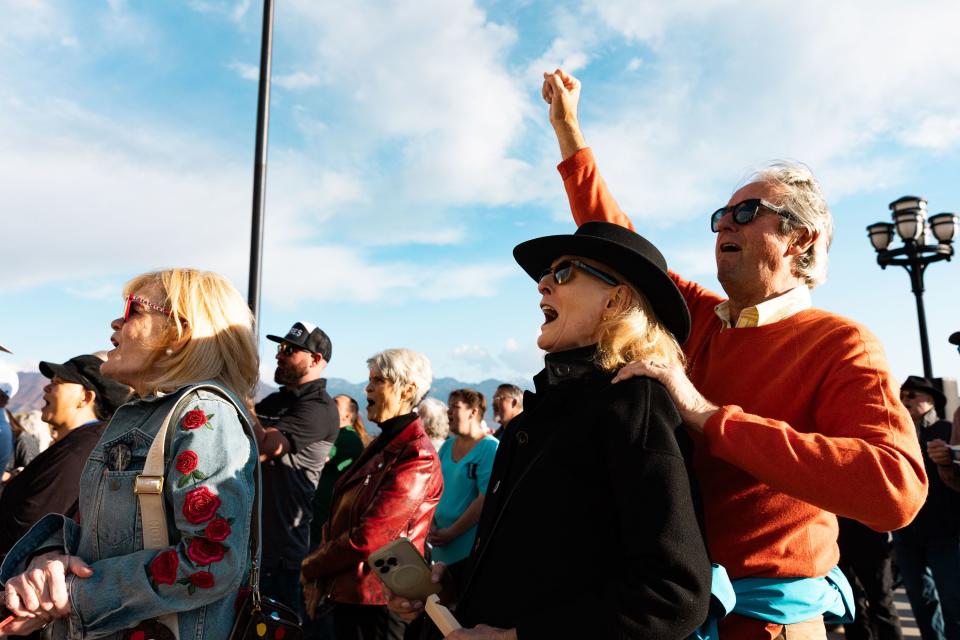
The building of the railroad
With financing and legislation secured, the two railroad companies entrusted to work on this project — Union Pacific and Central Pacific — began gathering crews to start laying down tracks in 1863. Employing thousands of Irish, Chinese, German and Italian immigrants, Central Pacific started laying down tracks eastward in Sacramento, California, while Union Pacific began work westward in Omaha, Nebraska. Civil War veterans and those freed from slavery also joined railroad companies.
These workers were often struggling with various issues, Blumberg said. “China was being torn apart by civil war and internal strife in this era and there was a huge diaspora to other countries,” he noted, including the U.S. where some of them immigrated to find work to feed their families back home.
Latter-day Saints, who had already trekked out West, also became involved in the railroad early on. During that same year in 1863, Brigham Young, then-president of The Church of Jesus Christ of Latter-day Saints, purchased $5,000 in stock of the railroad and rallied Latter-day Saint support for the project. “We want to hear the iron horse puffing through this valley. What for! To bring our brethren and sisters here,” Young said, per Utah State University.
Workers did almost all the work by hand, Kremer told me. They would drive spikes into the ground mile after mile and slowly broke through rocks and mountains.
As railroad workers pressed on, some Native American tribes objected to Pacific Railroad’s construction. Sioux and Cheyenne tribes tried to thwart construction as the railroad encroached on their land and resources, per PBS.
“It came at a devastating cost to Native American communities,” former chairman of the Northwest Band of the Shoshone Nation Darren Parry told KSL-TV.
The Pawnees ended up helping Union Pacific as they built in the area, as did the Paiute. They were impacted by the railroads, too, as “the railroad was probably the single biggest contributor to the loss of bison,” per Digital Public Library of America.
“Once the transcontinental railroad was complete, it took getting from New York to California from six weeks to six days,” Kremer said. “Think about what that means. They’re picking oranges in California. No one in New York can have California oranges because it takes six weeks to get there. They’d be rotten. But oranges will last for six days. So now New York gets California oranges. It changed commerce.”
It created national unity, Kremer explained.
Related
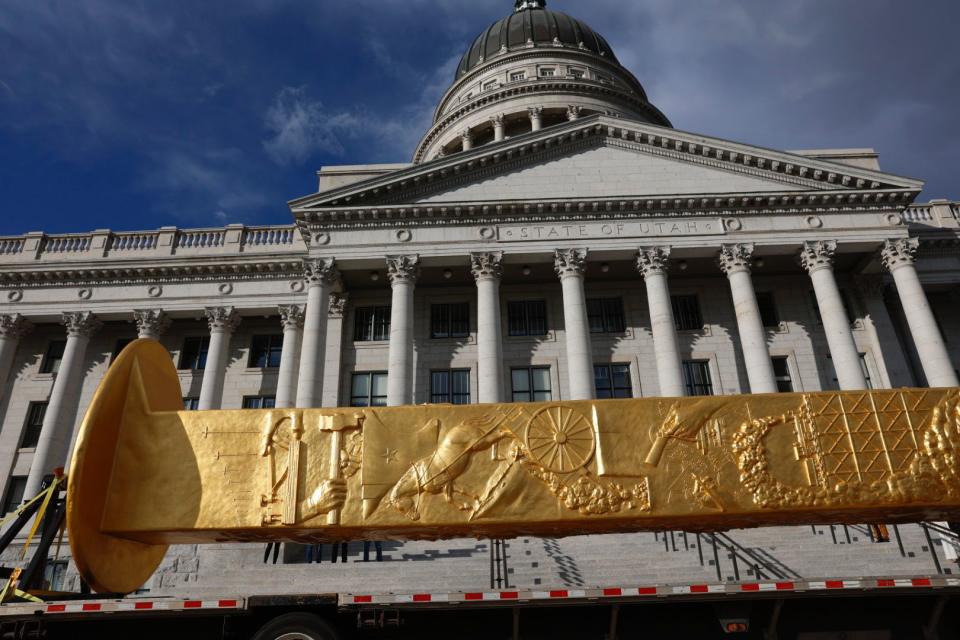
Today’s monument
Now 154 years after the transcontinental railroad was completed, Spike 150 still has stories it wants to tell.
“In 2019 was the first time that the story of railroad worker groups had been told,” Kremer said. “We’ve heard about the politicians, the financiers, the surveyors and others that also made it happen. But never really the worker groups.”
The year 2019 was the year Stanford researchers published two books on the importance of the Chinese workforce in building the railroad. The year marked the 150th anniversary of its completion. It was “a true recognition of the largely immigrant labor that constructed the transcontinental celebration,” Utah’s deputy state historic preservation officer Chris Merritt said amid the festivities.
What drew Spike 150 to Blumberg’s design was the inclusion of the different types of railroad worker groups, Kremer said.
One side of the monument depicts the Central Pacific company, composed mostly of Chinese workers. The Union Pacific appears on another side with a mix of Civil War veterans, Irish workers and people freed from slavery. Advancements in technology are on the third side of the spike and the final side is devoted to how Native Americans were impact with particular attention to some of the devastation they experienced.
Blumberg said the design started with an idea and sketches on napkins in restaurants. He spent six months talking with various Native American, Chinese and Irish groups to better understand these groups’ part in the railroad. After research and making initial design choices, Blumberg grabbed some clay, started molding it and eventually casting it into metal.
On Monday, the monument arrived at the steps of the Utah State Capitol before it finds its home in Brigham City next year.
CEO and chairman Spencer Eccles and president Lisa Eccles of the George S. and Dolores Doré Eccles Foundation were one of the primary benefactors of the golden spike monument.
“The railroads have been part of our family’s history for over 150 years,” Lisa Eccles told me as Spencer Eccles recounted how he served on the Union Pacific board of directors for 30 years, George Eccles was on the board for 45 years and David Eccles worked for Union Pacific in the late 1800s.
The family’s ties to Union Pacific and what the railroads have meant to Utah motivated their involvement in the monument.
“And now it’s here for the people of Utah first and foremost,” Spencer Eccles said. “Then, for everybody that comes to visit and there’ll be a lot of folks who will come out Highway 89 to turn off to see it.”
Chairman of the Golden Spike Foundation Doug Foxley told the Deseret News that after the 150th anniversary celebration, “we really wanted to continue to tell the story of the forgotten heroes of building the first transcontinental railroad.” So, the foundation decided to make a monument, which resulted in Blumberg’s piece of art.
“It’s far better than I ever thought it was going to be,” Foxley said as he looked toward the monument.
As the monument attracts visitors, Blumberg wants them to back away from what he called “chronological snobbery” and learn from the generations who built the railroad. “We can sometimes discount generations that went before us as less complex, less intelligent, less caring,” he said. But he thinks “history is complicated.”
“I would love people, especially young people, to see that real people that went before us weren’t just these flat, grainy, black and white people, that they were as complicated ... as we all fancy ourselves today,” he said.
If everyone walked away from the monument learning something new about the workers behind the railroad or the various ways the railroad changed the environment and Native American life, Blumberg said what he hopes for the monument would be fulfilled.
